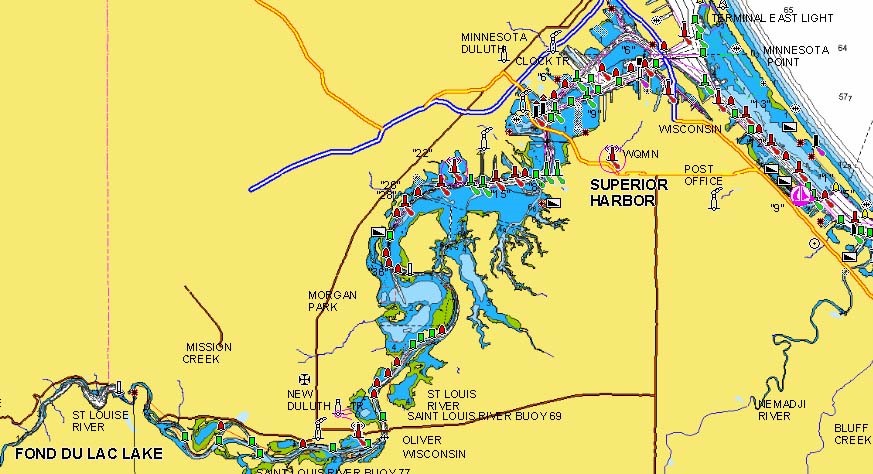
Lake Superior’s largest tributary, the St. Louis River, winds southward 193 miles from its headwaters near Hoyt Lakes, MN, before turning northward again to run between the port cities of Duluth and Superior, Wisconsin, and out into the big lake.
The lower river, dominated by a 12,000-acre freshwater estuary, was once, sadly, the depository for many types of industrial waste. It was, in fact, considered to be one of the most highly polluted rivers in Minnesota. Forty-five years of intense pollution abatement and control efforts, however, have changed all that. While still officially designated as an Area of Concern, with fish consumption advisories in place, conditions in this magnificent region have improved immensely.
The return of contaminant-sensitive lake sturgeon to the system, for example, is one sign of how far things have moved in the right direction. Once absent from the scene, sturgeon are now present in enough numbers to allow a limited catch-and-release fishery.
Bass fanatic and long-time friend of Northland Fishing Tackle, Matt Christy of Superior, is very familiar with the lower St. Louis River. While his preference is chasing smallmouths, he knows the habits of the river’s walleyes, crappies, and other gamefish—and his breakdown of the system will help you with your search.
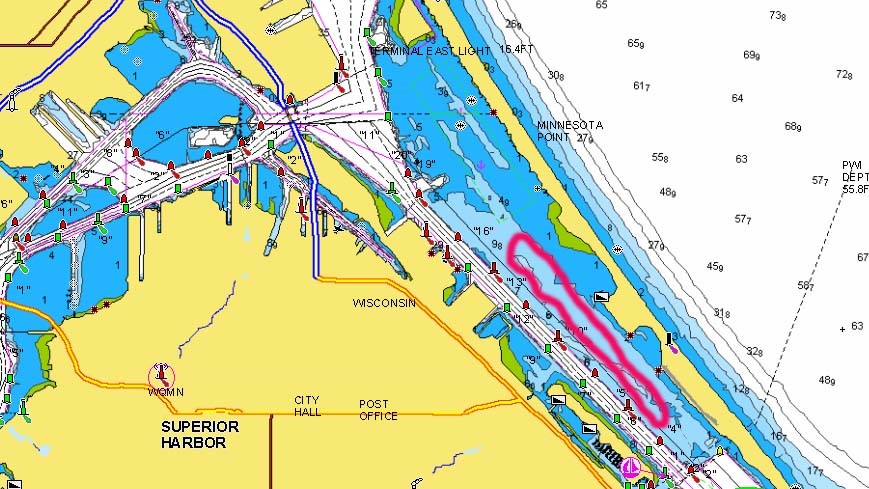
1. The majority of winter walleye fishing occurs on Superior Bay, a long, skinny stretch of water that’s separated from Lake Superior by Park Point on the Minnesota side and Wisconsin Point coming from the east. A commercial shipping channel is maintained along the mainland shoreline until late winter, “so most anglers walk-on from the north side to fish the flats (away from the channel),” explains Christy. “You still must be very careful, though.”
The flats run from about 6 to 10 feet deep, and except for subtle changes, the bottom is fairly uniform. “It’s the typical morning and evening bite,” he says, “and walleyes tend to cruise the flats while feeding. You may have to stay on the move until you find them, and maybe hunker down as evening approaches.”
The angler suggests jigging a Buck-Shot® Rattle Spoon, Puppet Minnow baited with a live minnow or tipped with a minnow head.
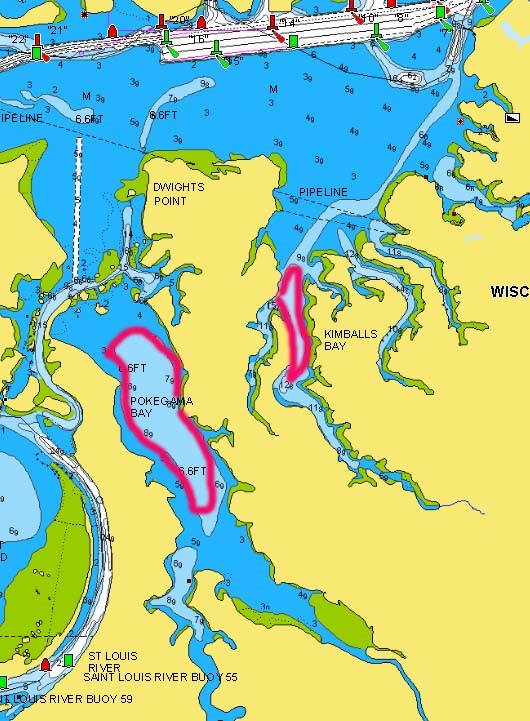
Winter’s most consistent crappie fishing occurs on Pokegama and Kimball’s bays on the Wisconsin side just downstream from Clough Island. “They hang in the deeper holes,” says Christy, “but it’s a ‘search thing’ here, too, so you’ll have to use your electronics to look for them.”
Try a 1/16- or 1/32-ounce Gypsi Jig® or Fire-Fly Jig in the Pink White pattern, according to Christy. Although it’s not always necessary to catch fish, you can tip the jig with a live maggot or waxworm to add scent to the presentation.
Here, too, use common sense and caution, he warns. “Late-season is a good time to fish these spots, but remember that these are current areas; do your homework before walking or driving a snowmobile onto the ice.”
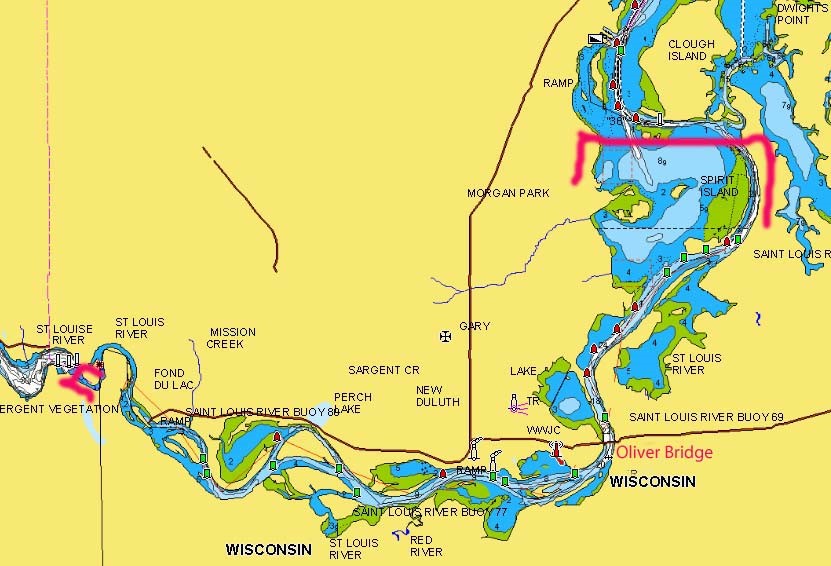
2. Open-water fishing on the St. Louis River begins with Minnesota’s general fishing opener in mid-May, and walleyes are the main attraction. “Before the season opens, walleyes from Lake Superior and those that reside in the river year-round migrate upstream,” he explains, “for the first few weeks, anglers are catching fish that are on their way back downstream. It’s actually when walleye fishing on the river is at its best.”
A lot of early-season walleyes will be found roughly from Spirit Lake upstream to the Thompson Reservoir Dam, according to Christy. “It’s more traditional river-type fishing up there,” he says, “with a defined channel and feeding flats on top.”
Walleyes on the move tend to be closer to the channel; those that are feeding or resting relate to the flats. “Start out fishing along the channel ledge, then move up onto the flats,” Christy suggests. “Pretty soon you’ll be able to determine where most of the walleyes are located.”
Jigs are the lures of choice here. Try drifting with the current, using the trolling motor to maintain course, while you drag or cast-and-hop a Fire-Ball® Jig tipped with a minnow—and a Sting’r Hook if the fish are biting short. “Sometimes a little blade-action helps, so don’t hesitate to tie on a Whistler Jig®,” the angler adds.
This section of the river can be easily accessed by boats launched from Boy Scout Landing in Gary New Duluth, MN, or from the boat ramp on the Wisconsin side near the Oliver Bridge. Anglers launching farther downstream shouldn’t be tempted to take the shortcut across Spirit Lake, Christy warns. “It’s fairly shallow and full of stumps and deadheads. Stick to the navigation channel that runs around the east side of Spirit Island.”
Finally, always keep in mind that walleyes are migrating this time of year, so they won’t necessarily be where you found them last. “It isn’t hard to anticipate their location, though,” explains Christy. “If I’m catching them close to a certain channel marker, I’ll know that when I come back the next week, I should start fishing 3 or 4 markers farther downstream.”
Kimballs and Pokegama bays are hotspots for early-season crappies; look for brush or trees along the shoreline and target them with float-and-fly presentations, or a Gypsi Jig®, or similar lure, suspended under a slip float.
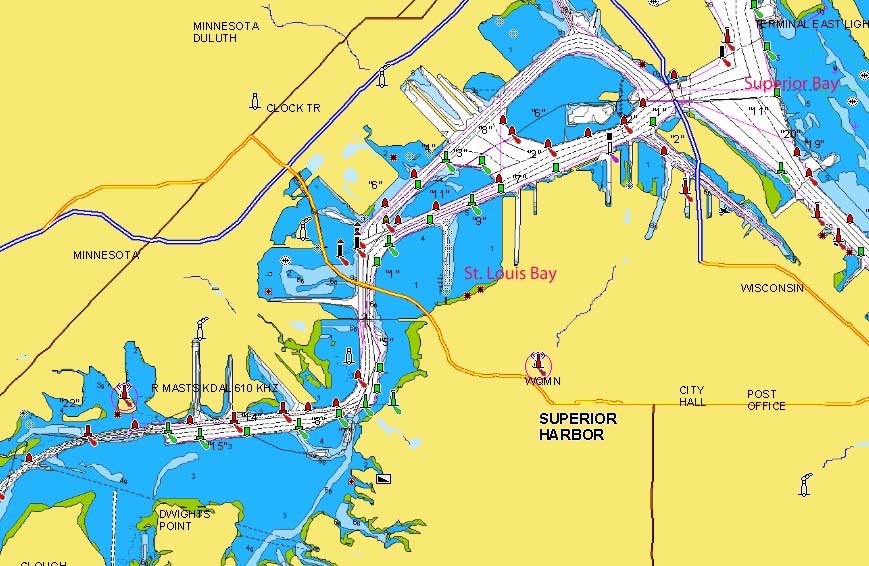
3. By early June walleyes are more spread out, and most of those that were headed for the big lake are already there. Resident fish are in a transitional limbo—not on the move so much, and not quite into their summer patterns. “It’s probably the toughest time to catch walleyes on the river,” says Christy.
This period is fairly short-lived, however, as by mid-June most walleyes will have set up in their summer spots, according to the angler, but fishermen will still have to find them. “The best fishing will be in St. Louis and Superior bays,” he explains, “and a lot of the walleyes will relate to the shipping channel. So, a solid strategy is to start near the channel edge and work shallower until you connect.”
While jig-and-minnow presentations work all summer long, drifting or slow-trolling a live bait rig often results in locating fish more quickly. Christy recommends dragging a Gum-Drop Floater-and-leech behind a Roach Walker Sinker heavy enough to maintain bottom contact.
Likewise, trolling minnow baits along channel ledges and over the flats is another proven search tactic. But not all the action occurs at mid-bay. “Swirls and eddies along retaining walls or at the end of shipping docks are often indicated by bubbles on the water’s surface,” says Christy, “and they are great places to find walleyes. Check them with your sonar and pitch a jig-and-minnow or an Impulse® Smelt Minnow on a jig. Don’t be afraid to use soft plastics in the summer.”
While the St. Louis River isn’t stacked with smallmouth bass, the fish tend to be on the weighty side, with 3, 4, and 5 pounders not uncommon. “Smallmouths tend to stick to a home range,” says Christy, “and the best stretch is from Spirit Lake to the dam.”
Early in the season, he recommends fishing the back bays of the upper river, flipping to cover wherever you can find it. Later, focus on the river channel edges and adjacent feeding flats, including classic smallmouth cover, such as shoreline rocks, rip-rap, and wood. “Smallies will move in and out of the channel, following the baitfish,” he explains. Mimic Minnows® and wacky-rigged soft plastic stickbaits work well, as do white soft plastic tube bait or Reed-Runner® Spinnerbaits.
The Highway 2 Bridge, farther downstream, is another smallmouth hotspot. Focus on rip-rap, retaining walls, and other man-made structures in the backwaters near the bridge.
This river has also earned a reputation for producing trophy-class muskies, including some 50-plus inchers. A massive flood in 2012 drastically changed the bottom-scape, washing away many of the more productive weedbeds and other cover. Muskie hunters, however, have been successful in searching out new areas that hold these predators.
Early in the season try trolling or casting crankbaits in the shallow bays and flats. After the weeds emerge, cast a Reed-Runner Magnum Spinnerbait overtop any bed you find, especially if it’s near the channel edge. Topwaters and glide baits are also solid choices here.
Later, when the water warms, you can sometimes find muskies in the channel itself. Some anglers also head upriver to fish the channel and sub-channels around the Highway 23 Bridge. Trolling crankbaits is one way to go, but also try casting a heavy Reed-Runner Magnum Spinnerbait along the edge, or probe the depths with a muskie-size tube bait on a heavy jig head.
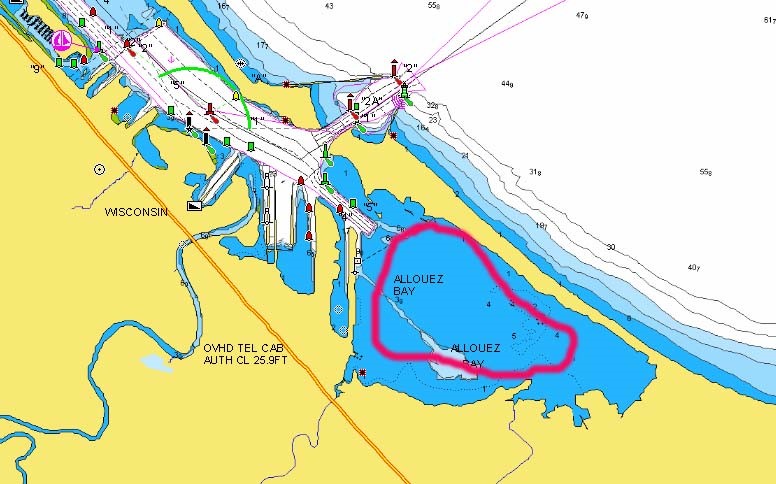
4. As late summer turns to fall, walleyes will still inhabit their summer haunts, but you can expect them to be more concentrated and more aggressive, the angler says. “You’ll still have to find them, but there will be more of them when you do,” he explains. “I wouldn’t change technics—jigging and rigging will still catch a lot of fish.”
The exception to this general rule is Allouez Bay at the far eastern end of Superior Bay. “It’s shallow, and it’s murky, and numbers of big walleyes seem to congregate there in the fall,” says Christy. “A lot of anglers troll minnow-body crankbaits, but anything that makes noise, like a Whistler Jig or Buck-Shot Rattle Spoon, will attract attention in that dirty water.”
Lake maps courtesy of Navionics. For more information, visit: Navionics.com
Vital Stats
St. Louis River
Length: 179 miles
Watershed: 3,963 square miles
Estuary: 11,500 acres
Species Present: Walleyes, Northern Pike, Lake Sturgeon, Muskies, Smallmouth Bass, Largemouth Bass, Yellow Perch, Rock Bass, Sunfish, Black Crappies, Channel Catfish, White Perch, Black Bullheads, Yellow Bullheads, White Suckers, Freshwater Drum, Shorthead Redhorse, Silver Redhorse, Common Carp, Alewives, Common Shiner, Golden Shiner, River Ruffe.

